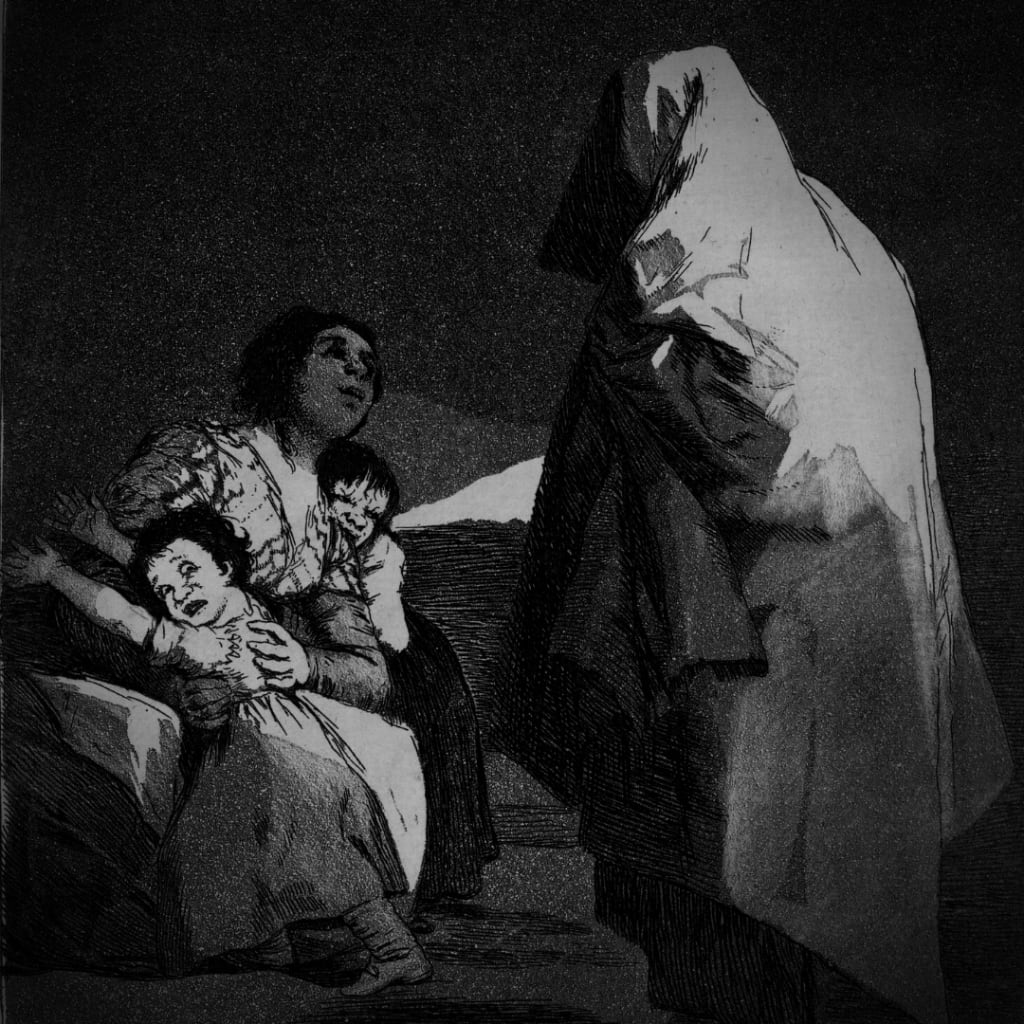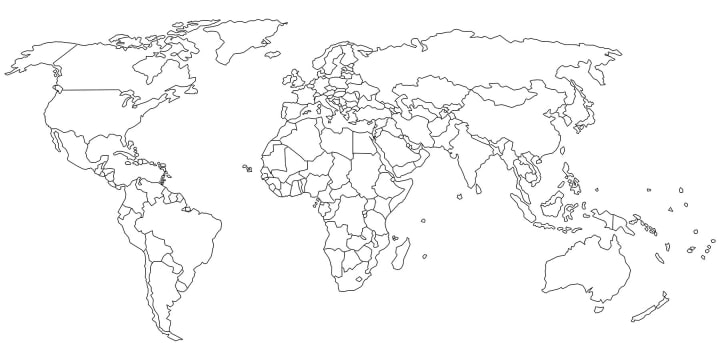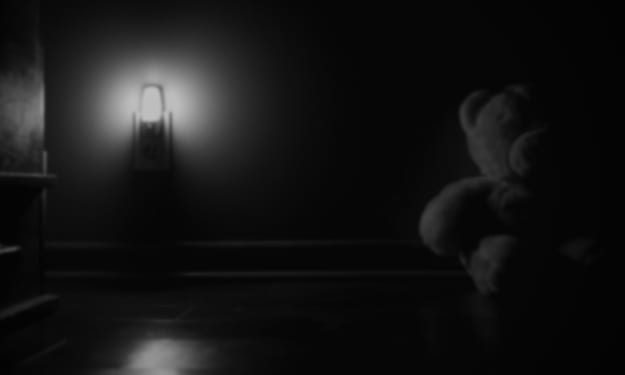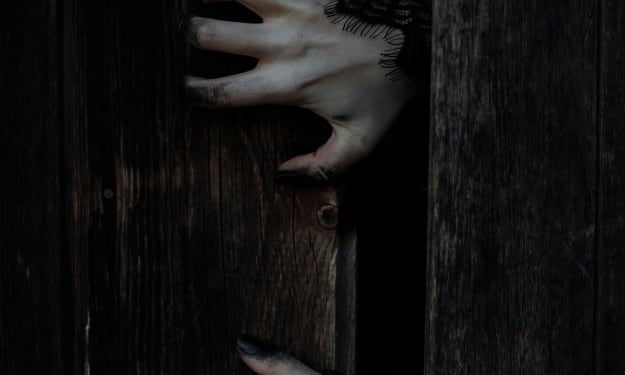Bogeyman: Myth or More?
A creature parents tell their children about all around the world.

Bogeyman.
Boogeyman.
Boogie monster.
What does that name mean to you?
Does it recall memories from childhood?
Close your eyes for a few seconds, and picture the monster in your mind.
What does it look like?
What does it do?
Keep that picture in your mind, and stop reading for a minute to drop me a line (email, Instagram, whatever) to tell me precisely what you are picturing.
What does your bogeyman look like?
What does your bogeyman do?
You might think that, as an adult, you're safe from the bogeyman. You're all grown up; no one's told you the stories for years—maybe even decades—and the last time you really thought about the bogeyman was probably when you were much smaller, lying in bed with the lights off and your eyes wide open, listening to your own heartbeat and breath speed up as you were wondering if that sound shuffling or scratching sound you heard for a moment was actually there or if it was just your imagination.
Did the noise come from the closet?
Or under the bed?
Outside your window?
Tapping. Slowly scratching.
Something watching, something waiting.
For you to close your eyes.
And drift off into slumber.
The shadow in the darkness...moves.
Yes, you thought you were safe—all grown up, perhaps even miles away from that place—that last night that you feared the bogeyman would get you.
Take a look at this map.

I made another version of the same map. I colored in red the parts of the world where the bogeyman lives...and hunts.

What Is the Bogeyman?
Take a moment to listen to this song, which really sets the appropriate mood for the legend of the bogeyman.
"Hush, Hush, Hush, Here Comes the Bogeyman" is a song written by Lawton, Brown, Smith, Lang and Benson. It was recorded in 1932 by British band leader Henry Hall and his Orchestra, with vocals by Val Rosing.
The song refers to the Bogeyman, a legendary ghost-like monster which has no specific appearance, intended only as an amorphous embodiment of terror, usually among children.
See, there's a reason why I asked you to drop me a line and tell me what you were picturing as the bogeyman. There's no clear and specific description, only that it's commonly thought of as masculine or androgynous—but even that idea is different in various cultures. Yes, cultures. The bogeyman is everywhere. Everywhere. No matter where on planet Earth you search, which culture you investigate, you'll find a local legend of the bogeyman.
It is, perhaps, the only creature of its kind that spans the entire world—which is quite impressive, considering no one knows what it is or what it looks like.
So, what do we know about the bogeyman?
Adults tell children of the bogeyman, warnings that the bogeyman will snatch kids and take them away forever. Some say it has claws, talons, and sharp teeth; others claim it has horns and hooves, while others say it is more of a massive bug. Depending on the part of the world, it also sometimes carries a sack in which to stuff children.
No one knows quite where it came from.
The stories around the world typically fit into three categories: 1) a bogeyman that punishes children who misbehave, 2) a bogeyman that is violent and malicious against anyone unfortunate enough to cross its path 3) a bogeyman that protects the innocent.
The bogeyman is the personification of one's fears, terror incarnate, the embodiment of evil.
This is why it has no specific features, personality, or attributes. Instead, it knows you. It knows your mind, your deepest dread. It knows how to scare you and takes on that form just for you.
Earliest Known Bogeyman
As far as anyone can tell, the bogeyman hasn't always been around. At least, not in the form we now recognize as the nebulous child snatcher. The word "bogeyman" seems to go back to around the 1500s in England as a reference to hobgoblins. If we look further back, though, there are roots of the word "bogey" in Middle English bugge ("frightening specter, scarecrow"), an old Welsh word bwg ("ghost, hobgoblin"), Welsh bwgwl ("threat" or an older meaning of "fear"), Norwegian bugge, Irish bagairt ("threat"), and the list just keeps going on and on in Europe.
Though the word "bogey" is European, the concept is everywhere, and each locale has its own word to describe the terror that lives in the dark.
Bogeyman Around the World
Here's a brief look at creatures and legends (with eerie similarities to bogeymen) around the world to illustrate how we're all in constant mortal danger:
- Argentina, Uruguay, Chile, Paraguay, Brazil, Portugal, Spain, and more: el Hombre del costal, el hombre del saco, o homem do saco. The Sack Man kidnaps naughty children, making them vanish forever.
- Eastern Mediterranean: Babau. A tall man with a heavy black coat and a hood or hat that covers his face. He takes children away to a mysterious and frightening place. An Italian nursery rhyme about it goes like this: "A chi lo do? Lo darò all' uomo nero, che lo tiene un anno intero." ("Who do I give this child to? I will give him to the Boogeyman, who's going to keep him for a whole year.")
- In Mexico: El Cucuy. An evil monster that hides under the bed and kidnaps children to eat them.
- Afghanistan. The Madar-i-Al comes to slaughter infants in their cribs.
- Bolivia, Colombia, Guatemala, Peru, Mexico, El Salvador, Honduras, Venezuela, Puerto Rico, the Dominican Republic, Chile, and Panama Argentina: El Cuco. El Cuco whisks away misbehaving children.
- Egypt. ابو رجل مسلوخة, "Abu Rigl Maslukha, " meaning the "Man With the Burnt Leg." It is a child who was burned because he didn't listen to his parents and now comes to grab naughty children so he can cook and eat them.
- In Kwakwakaʼwakw and Nuu-chah-nulth mythology, several Native American tribes around the Northwest Coast have legends of a "Basket Woman" (Dzunuḵ̓wa and other names) who catches naughty children and carries them off to eat in her lair.
- South Korea: 망태 할아버지 or "Mangtae Hal-abeoji," meaning the "Net Bag Grandfather." He kidnaps spoiled children and takes them away to the mountains, never to be seen again.

- In Spain: El Coco, a creature with glowing red eyes like coals, hides under beds and takes children away. Some say the creature used to be a child who was the victim of violence, and now it is both alive and not. They also have a little rhyme, sung to the tune of "Rock-a-bye Baby," that goes like this: "Duérmete niño / Duérmete ya / Que viene el coco / Y te llevará. Duérmete niño / Duérmete ya / Que viene el coco / Y te comerá." (Translated: Sleep my baby / Sleep, baby, do! / The bogeyman's coming / And he will take you. / Sleep my baby / Sleep, baby, do! / The bogeyman's coming / And he will eat you.)
- Serbia: The Bauk hides in abandoned places or holes, waiting to grab children, carry them away, and eat them.
- In Quebec, Canada: Bonhomme Sept Heures ("The Seven O'Clock Man"). He comes to kidnap children who aren't home by nightfall, tossing them into his burlap sack to take them to his cave (or hut) and eat them.
This is just a small sampling. The stories are literally everywhere. Some of these legends cross over into other regions, likely because the bogeyman knows no boundaries.
Why are there so many?
Why is the bogeyman everywhere?
How To Survive a Bogeyman Attack
This one is simple: never venture into the dark. Usually, with these types of creatures, you could just move to an area in the world where they don't live. But remember that red map I showed you earlier?
Where would you go?
Where would you hide?
Adults warn children of the bogeyman, but some stories say that the bogeyman comes for adults as well. Every night, the sun sets, taking with it the certainty of light. The fear you felt when last you were small and in the dark returns. Movement caught in the corner of your eye. The sound of a breath from behind, a subtle scraping from the other room, or tapping on your window.
The sun rises, bringing a sense of security, but no matter the time...there are always dark places and shadowed spaces.
Relevant & Related
- A children's cartoon about the bogeyman: Martin Mystery - It Came from the Bog.
- Here are a few more legendary creatures I've written about that fit squarely into the bogeyman lore: El Silbón of Los Llanos in South America | The Qalupalik of Inuit Folklore | Krampus of Alpine Folklore
- The Nightmare Before Christmas - Oogie Boogie's TRUE Identity Revealed
- In the summer of 2023, a film will be released titled The Boogeyman. It's based on a 1973 short story by Stephen King. Wikipedia link here since there's little information on it at the time of writing this. An official trailer was just released on 1/29/2023: The Boogeyman | Official Trailer | In Theaters June 2.
- There was an older film from 2005 (and even more older ones with a similar title and concept) called Boogeyman. It even had two sequels.
- For a different kind of boogie man: KC and the Sunshine Band - I'm Your Boogie Man. We can't forget about White Zombie's version, and just because it's a great song: Blood, Milk and Sky.
- But on the topic of music, there's one song about the bogeyman that sits above and beyond them all: Boogie Woogie Wu by the venerable Insane Clown Posse.
- I also wrote about a specific type of bogeyman: El Coco, El Cucuy: The Child Eater.
~
Originally published in my weekly newsletter Into Horror History—every week, I explore the history and lore of horror, from influential creators to obscure events. Cryptids, ghosts, folklore, books, music, movies, strange phenomena, urban legends, psychology, and creepy mysteries.
About the Creator
J.A. Hernandez
J.A. Hernandez enjoys horror, playing with cats, and hiding indoors away from the sun. Also, books. So many books—you wouldn't believe.
He runs a weekly newsletter called Into Horror History and writes fiction.
https://www.jahernandez.com






Comments
There are no comments for this story
Be the first to respond and start the conversation.